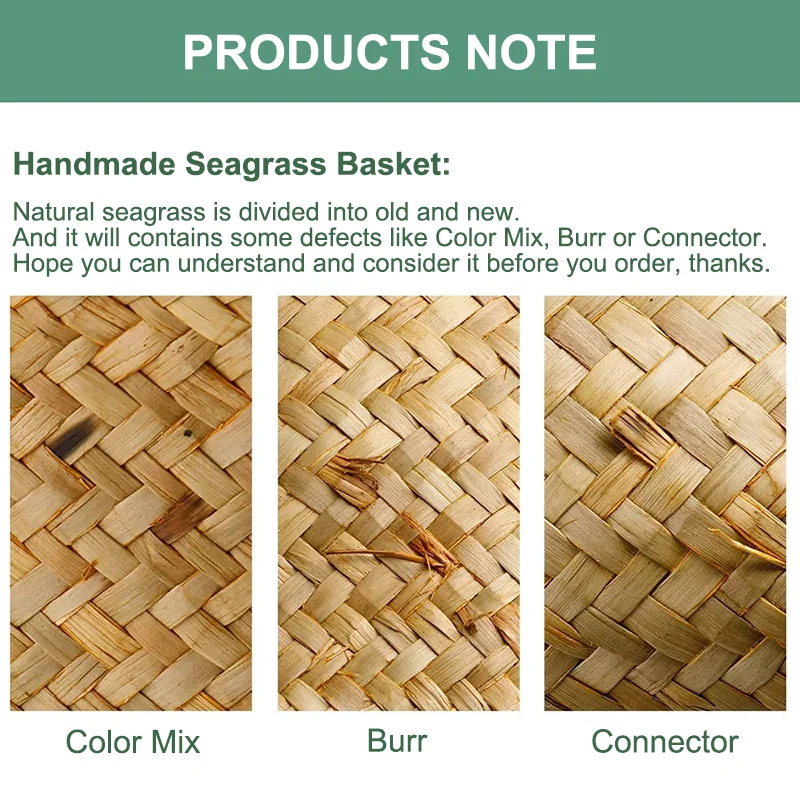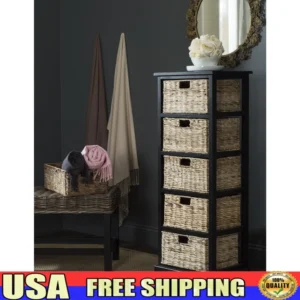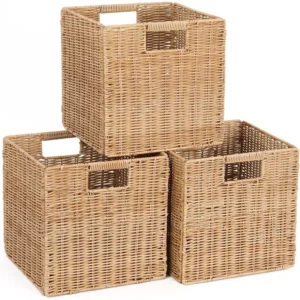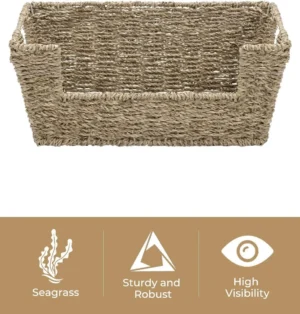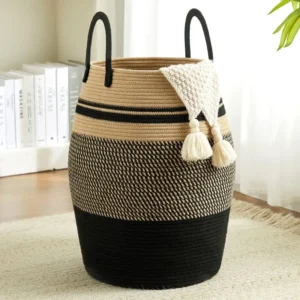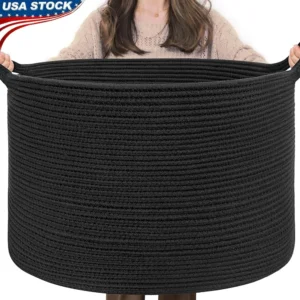Understanding Wicker Basics: What You Need to Know First
When shopping for wicker furniture or baskets, many people don’t realize that “wicker” isn’t actually a material—it’s a technique. Wicker refers to the process of weaving pliable materials into a rigid structure, creating the distinctive look we associate with these items. This ancient craft dates back thousands of years, with evidence of wicker items found in the tombs of Egyptian pharaohs and throughout ancient Roman households.
One common misconception is using “wicker” and “rattan” interchangeably. Rattan is actually just one of many materials that can be used in the wicker weaving process. Think of wicker as the method and rattan (or other materials) as the ingredients.
What is wicker? A weaving technique that creates furniture, baskets, and decorative items by intertwining pliable materials into sturdy structures. The technique remains largely unchanged for thousands of years, though the materials have evolved significantly.
This foundational understanding of natural wicker vs synthetic options helps explain why there are so many variations in today’s market. As we explore both natural and synthetic choices, remembering this distinction will help you make a more informed decision about which type best suits your needs.
Natural Wicker: Materials, Characteristics, and Considerations
Natural wicker carries the authentic charm of traditional craftsmanship, using materials harvested directly from nature. Each piece tells a story through its unique variations in color, texture, and pattern—a quality that mass production simply cannot replicate.
Common Natural Wicker Materials:
- Rattan: A vine-like palm with a solid core, providing excellent strength and flexibility
- Reed: Thin, pliable grass stalks often used for intricate weaving patterns
- Willow: Known for its durability and distinctive rustic appearance
- Bamboo: Offers exceptional strength and a distinctive aesthetic
- Seagrass: Creates a textured, robust weave with natural color variations
The appeal of natural wicker extends beyond its visual charm. Running your fingers across genuine rattan reveals subtle texture variations that synthetic materials struggle to duplicate. This tactile quality creates an immediate sense of warmth and authenticity in your living space.
Advantages of Natural Wicker:
- Beautiful, organic aesthetic with unique character in each piece
- Pleasant tactile experience with natural textures
- Made from renewable resources with biodegradable end-of-life profile
- Develops a natural patina over time that many find appealing
- Generally lighter weight than synthetic alternatives
- Natural temperature regulation (doesn’t get as hot in sunlight)
Limitations to Consider:
- Vulnerable to moisture damage and humidity fluctuations
- Requires protection from direct sunlight to prevent drying and cracking
- May attract insects if not properly maintained
- Typically requires more regular maintenance
- Generally not suitable for full outdoor exposure
- Often more expensive than synthetic alternatives
Natural wicker performs exceptionally well in controlled indoor environments where humidity levels remain stable. The eco-friendly wicker basket materials used in these products represent sustainable choices for environmentally conscious consumers. For authentic natural materials with distinctive character, consider exploring our collection of rattan baskets that showcase traditional craftsmanship techniques.
Synthetic Wicker: Modern Materials, Benefits, and Limitations
Synthetic wicker represents modern innovation meeting traditional design. These materials emerged as manufacturers sought to address the limitations of natural wicker while maintaining its aesthetic appeal. Today’s synthetic wicker products range dramatically in quality, with premium versions nearly indistinguishable from natural materials.
Common Synthetic Wicker Materials:
- High-Density Polyethylene (HDPE): Premium option with excellent durability and UV resistance
- Polyethylene (PE): Mid-range material with good weather resistance
- Polypropylene (PP): Affordable option with moderate durability
- Polyvinyl Chloride (PVC): Budget material often used in lower-cost furniture
Unlike natural wicker, synthetic versions are engineered specifically for consistency and performance. The manufacturing process allows for precise color matching and uniform weaving patterns, creating a more contemporary appearance that appeals to many modern homeowners.
Advantages of Synthetic Wicker:
- Exceptional weather resistance (rain, snow, UV exposure)
- Minimal maintenance requirements
- Won’t rot, split, or develop mold in humid environments
- Available in wide range of colors beyond natural tones
- Typically more affordable than high-quality natural wicker
- Consistent appearance with predictable performance
- Won’t attract insects or pests
Limitations to Consider:
- May lack the unique character and warm feel of natural materials
- Lower-quality versions can look obviously artificial
- Can become brittle or fade over time, especially cheaper varieties
- Often heavier than natural equivalents
- Can become uncomfortably hot when placed in direct sunlight
- Environmental concerns regarding non-biodegradable materials
The quality variation in synthetic wicker is substantial. Premium “resin wicker” or “all-weather wicker” typically uses HDPE and offers significantly better performance than budget PVC options. Understanding the synthetic vs natural wicker quality spectrum helps consumers make better purchasing decisions based on their specific needs.
For families with children or those concerned about material safety, understanding the safety aspects of synthetic wicker for laundry and other household applications can provide peace of mind when selecting these products.
Side-by-Side Comparison: Natural vs. Synthetic Wicker

When choosing between natural and synthetic wicker, seeing their differences side by side helps clarify your decision. The following comparison highlights the key factors to consider:
| Feature | Natural Wicker | Synthetic Wicker |
|---|---|---|
| Materials | Rattan, reed, bamboo, willow, seagrass | HDPE, PE, PP, PVC |
| Durability (Indoor) | 7-15+ years with proper care | 5-20+ years depending on quality |
| Durability (Outdoor) | 1-3 years with protection | 3-15+ years depending on quality |
| Weather Resistance | Poor – requires protection | Excellent – designed for outdoor use |
| Maintenance | Regular cleaning, occasional oiling | Simple wipe-down cleaning |
| Aesthetic | Warm, organic, develops character | Consistent, uniform, contemporary |
| Initial Cost | Generally higher | Typically lower (quality dependent) |
| Comfort | Natural temperature regulation | May become hot in direct sun |
| Environmental Impact | Renewable resources, biodegradable | Non-biodegradable, but quality versions recyclable |
| Best Applications | Indoor spaces, covered porches | Full outdoor exposure, high-moisture areas |
This comparison reveals why there isn’t a universal “better” choice—each material excels in different situations. For instance, while natural wicker brings unmatchable warmth to indoor spaces, synthetic options clearly outperform in challenging outdoor environments.
For more detailed analysis of these materials, our synthetic vs natural wicker guide provides comprehensive information about long-term performance expectations. If you’re ready to explore different options visually, browse our collection of wicker baskets featuring both material types.
Key Decision Factors: How to Make Your Choice
Making the right choice between natural and synthetic wicker depends largely on your specific circumstances and priorities. Consider these key factors:
Location and Environment
Where you plan to use your wicker furniture or baskets should heavily influence your decision. Indoor environments generally allow greater flexibility, while outdoor settings impose stricter requirements.
- Indoor Use: Both materials work well, so aesthetic preference can be prioritized
- Covered Outdoor Areas: High-quality natural wicker can work with proper care, but synthetic offers greater peace of mind
- Full Outdoor Exposure: Synthetic wicker is almost always the better choice
Climate Considerations
Your local climate significantly impacts material performance:
- Humid Regions: Natural wicker may warp or develop mold without careful maintenance
- Dry Climates: Natural wicker can become brittle without occasional conditioning
- Extreme Temperature Fluctuations: Synthetic wicker typically handles these better
- High UV Exposure: Quality synthetic wicker with UV inhibitors will outlast natural materials
Maintenance Commitment
Be honest about how much time you’re willing to dedicate to maintenance:
- Low Maintenance Preference: Synthetic wicker requires little more than occasional cleaning
- Willing to Perform Regular Care: Natural wicker can thrive with consistent attention
- Seasonal Storage Possibility: Natural wicker outdoors becomes more viable if winter storage is an option
Understanding the factors involved in choosing between natural synthetic wicker helps align your selection with your lifestyle. For specific applications like laundry storage, our wicker laundry baskets collection offers options suitable for various environments.
Black Wicker Baskets, Rattan Storage Baskets, Tall Wicker Baskets, Wicker Shelf Baskets, Woven Storage Baskets
5-Tier Distressed Black Wood Frame Storage Tower with Removable Wicker Baskets for Home Organization$715.80 Select options This product has multiple variants. The options may be chosen on the product pageWicker Laundry Baskets, Woven Laundry Baskets, Woven Storage Baskets
$392.02 Select options This product has multiple variants. The options may be chosen on the product pageRattan Shelf Baskets, Rattan Storage Baskets, Small Wicker Baskets, Square Wicker Baskets
Square Plastic Wicker Storage Baskets Set of 3 with Collapsible Design for Cube Storage Organization$185.47 Select options This product has multiple variants. The options may be chosen on the product pageWicker Baskets with Handles, Wicker Storage Baskets, Woven Storage Baskets
$137.92 Select options This product has multiple variants. The options may be chosen on the product pageLarge Wicker Laundry Baskets, Tall Wicker Baskets, Woven Laundry Hampers, Woven Storage Baskets
$130.54 Select options This product has multiple variants. The options may be chosen on the product pageWicker Blanket Baskets, Woven Laundry Baskets
$89.60 Select options This product has multiple variants. The options may be chosen on the product page
How to Identify Quality Wicker Before Purchasing
Not all wicker is created equal. Whether you choose natural or synthetic, these quality indicators help ensure you’re getting a product that will stand the test of time:
For Natural Wicker
- Consistent Weaving Pattern: Look for tight, uniform weaving without gaps
- Smooth Texture: Quality pieces should be free from rough spots or splinters
- Flexibility: Gently press on the weave—it should have slight give without cracking
- Weight: Better-quality natural wicker has substantial weight without feeling excessively heavy
- Finish Quality: Even coloration with no drips, bubbles, or unfinished areas
- Joints and Connections: Should be secure and reinforced at stress points
For Synthetic Wicker
- Material Composition: HDPE and PE generally outperform PP and PVC
- UV Protection: Confirm UV inhibitors are integrated into the material (not just surface-applied)
- Color Consistency: Coloration should run through the material, not just on the surface
- Weaving Tension: Properly tensioned weaving won’t easily deform when pressed
- Frame Construction: Aluminum frames resist rust better than steel in outdoor applications
- Warranty: Better products typically offer longer coverage periods
For All Wicker Furniture
- Structural Integrity: No wobbling or creaking when you sit or apply pressure
- Cushion Quality: If included, cushions should have high-density foam and quality fabric
- Water Drainage: Outdoor pieces should have drainage features to prevent water pooling
- Hardware Quality: Stainless steel or aluminum hardware resists corrosion better
Learning to differentiate between natural vs synthetic rattan characteristics helps consumers avoid disappointment with their purchases. The ability to identify authentic materials ensures you receive the specific benefits you’re paying for.
Essential Care Guide: Maintaining Your Wicker Furniture
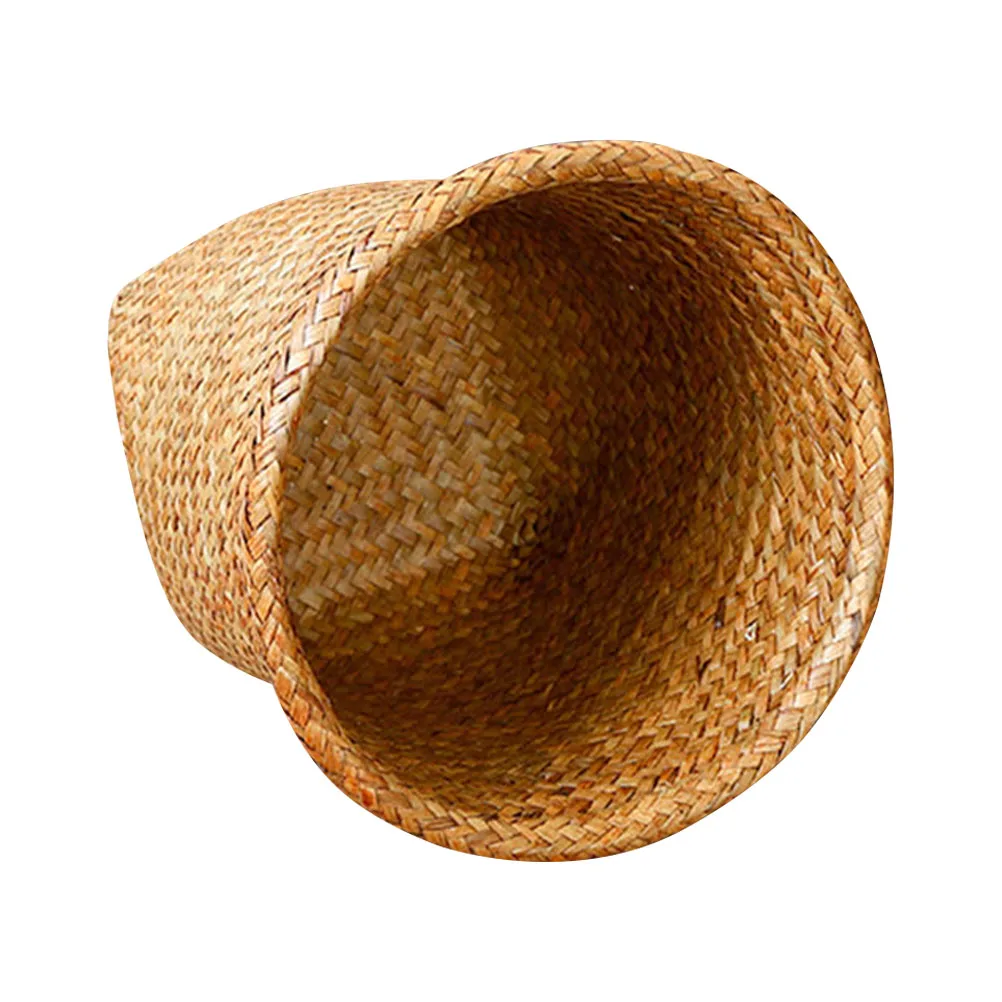
Proper maintenance significantly extends the life of wicker furniture regardless of material. These care instructions will help preserve your investment for years to come.
Natural Wicker Maintenance
- Regular Dusting: Use a soft brush attachment on your vacuum weekly
- Cleaning: Wipe with a damp (not wet) cloth using mild soap solution when needed
- Conditioning: Apply boiled linseed oil or specialized rattan oil annually
- Humidity Control: Maintain indoor humidity between 40-60% to prevent cracking or warping
- Sun Protection: Keep away from direct sunlight and heat sources
- Spill Response: Wipe spills immediately and dry thoroughly to prevent staining
- Storage: Keep in climate-controlled environments during extreme weather
Synthetic Wicker Maintenance
- Regular Rinsing: Hose down outdoor pieces every few weeks to remove dust and debris
- Cleaning: Use mild soap solution with soft brush for deeper cleaning twice yearly
- Inspection: Check regularly for loose weaving and tighten if necessary
- Protection: Consider furniture covers during extreme weather or long periods of disuse
- Cushion Care: Store cushions when not in use to extend their life
- Avoid Abrasives: Never use harsh chemicals or pressure washers
Preventative Care for All Wicker
- Lift, Don’t Drag: Always lift furniture when moving to avoid straining the weave
- Use Coasters: Prevent moisture rings and heat damage with appropriate table protection
- Address Repairs Promptly: Small issues can quickly become major problems if neglected
- Seasonal Inspection: Check thoroughly for damage at the beginning and end of each season
For detailed guidance on maintaining specific items, our guide on how to clean wicker baskets provides step-by-step instructions for both natural and synthetic materials. Proper care extends the life of all our wicker storage baskets, ensuring they remain beautiful and functional for years.
Environmental Impact: Sustainability Considerations
Environmental concerns increasingly factor into purchasing decisions. Both natural and synthetic wicker have distinct sustainability profiles worth considering:
Natural Wicker Sustainability
Pros:
* Made from renewable plant resources
* Biodegradable at end of life
* Traditional harvesting often supports rural economies
* Lower carbon footprint in production processes
* Minimal chemical treatments when left in natural state
Cons:
* Potential for unsustainable harvesting practices
* Transportation impact when sourced from distant locations
* Shorter lifespan may mean more frequent replacement
* Some finishes and treatments may contain VOCs or other chemicals
Synthetic Wicker Sustainability
Pros:
* Longer lifespan reduces replacement frequency
* Higher-quality versions (HDPE) are recyclable
* Durability means less waste over time
* No need for potentially toxic preservation treatments
* Modern manufacturing often focuses on reduced environmental impact
Cons:
* Made from petroleum-based materials (non-renewable)
* Not biodegradable
* Lower-quality versions often end up in landfills
* Manufacturing process can be energy-intensive
* Microplastic concerns with weathering over time
When evaluating the overall environmental impact, consider both production and lifetime use. For specific applications like laundry storage, exploring the natural vs synthetic wicker laundry options helps consumers make choices aligned with their environmental values.
Frequently Asked Questions About Wicker Furniture
Is wicker the same as rattan?
No. Wicker is the weaving technique, while rattan is one specific material that can be used in wicker production. Rattan is a vine-like palm native to tropical regions, valued for its strength and flexibility. Other materials like bamboo, reed, and synthetic fibers can all be used to create wicker furniture.
How long does synthetic wicker furniture last outdoors?
Quality synthetic wicker can last 5-15+ years outdoors, depending on the specific material and construction quality. High-density polyethylene (HDPE) wicker typically offers the longest lifespan, while PVC versions may deteriorate within 2-3 years of full outdoor exposure.
Is synthetic wicker truly “all-weather”?
Not all synthetic wicker is created equal. Premium “all-weather” wicker made from HDPE with UV inhibitors can indeed withstand most weather conditions. However, budget synthetic wicker often lacks these protections and can degrade quickly. Always verify the specific material used before assuming outdoor durability.
Can I leave synthetic wicker furniture outside in winter?
Quality synthetic wicker furniture can generally withstand winter conditions, but cushions should be stored indoors. For extended furniture life, using covers or storing furniture during extreme weather is recommended, particularly in regions with heavy snow or freezing temperatures.
How can I tell the difference between natural and synthetic wicker?
Look closely at the weave pattern—natural wicker typically has slight variations and imperfections, while synthetic versions appear more uniform. Natural wicker also has a distinctive organic smell, especially when new. When touched, natural wicker feels slightly different in temperature and texture compared to synthetic alternatives.
Is “resin wicker” good quality?
“Resin wicker” typically refers to higher-quality synthetic wicker made from HDPE or PE. It’s generally considered the premium tier of synthetic wicker with better durability, UV resistance, and appearance than PVC alternatives. However, quality still varies between manufacturers.
Can natural wicker be used outdoors at all?
Natural wicker can be used in protected outdoor areas like covered porches or screened patios where exposure to direct sunlight and moisture is limited. However, it requires regular maintenance and should be brought indoors during inclement weather. For full outdoor exposure, synthetic wicker is strongly recommended.
For more substantial wicker pieces with storage capacity, our wicker storage trunks collection offers options suitable for various indoor environments.
Final Decision Guide: Choosing the Right Wicker for Your Needs
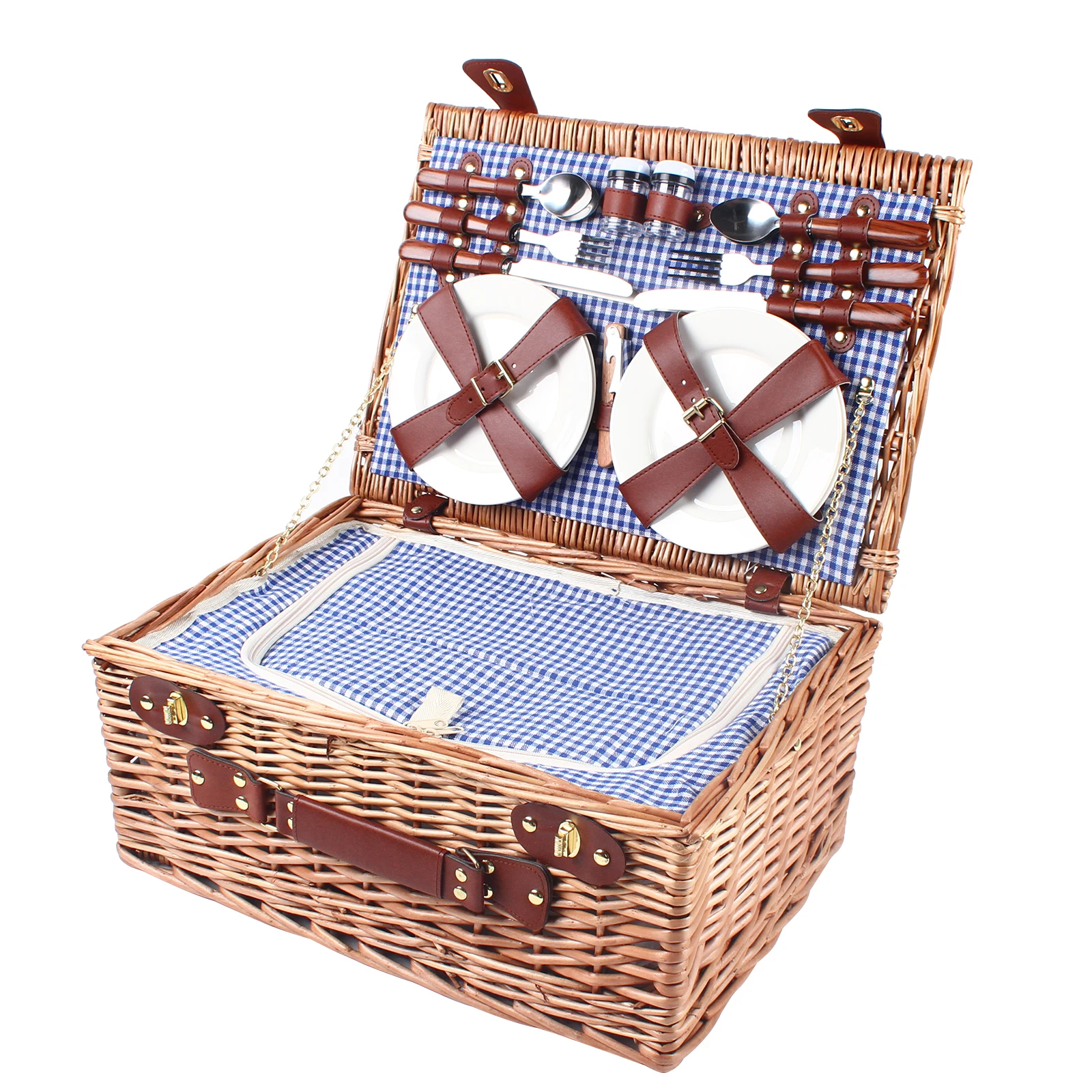
After considering all factors, your final decision should align with your specific priorities and circumstances. Here’s a simplified framework to guide your choice:
Choose natural wicker if:
* You prioritize authentic, traditional appearance and tactile experience
* The item will remain primarily indoors in a stable environment
* You appreciate the unique character and patina that develops over time
* You’re willing to perform regular maintenance
* Environmental sustainability is a top priority
* You value artisanal craftsmanship and traditional techniques
Choose synthetic wicker if:
* The furniture will face significant outdoor exposure or moisture
* Low maintenance is important to your lifestyle
* You need consistent durability in challenging environments
* You have children or pets that might be rough on furniture
* Color matching with existing decor is important
* Initial cost considerations are a significant factor
Remember that quality varies significantly within both categories. A premium natural wicker piece will outlast a budget synthetic option in appropriate conditions, while high-quality synthetic wicker can provide years of trouble-free use even in challenging environments.
For specific guidance on materials for particular applications, our ultimate guide to laundry basket materials provides detailed recommendations based on typical usage patterns.
At Tidy Treasure, we carefully select both natural and synthetic wicker products that meet our quality standards, ensuring that whichever material you choose, you’ll receive a product designed to organize your life beautifully for years to come.

